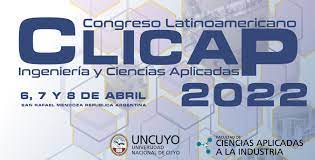View Item
- xmlui.general.dspace_homeCentros Regionales y EEAsCentro Regional Mendoza - San JuanEEA Rama CaídaPresentaciones a Congresosxmlui.ArtifactBrowser.ItemViewer.trail
- DSpace Home
- Centros Regionales y EEAs
- Centro Regional Mendoza - San Juan
- EEA Rama Caída
- Presentaciones a Congresos
- View Item
Contenido de sorbato de potasio residual en ciruelas tiernizadas según el método de deshidratación = Residual potassium sorbate content in tenderized plums according to the dehydration method
Abstract
Las ciruelas d’Agen se deshidratan al sol o en horno y posteriormente se tiernizan, para lograr un producto listo para consumir. Al tiernizar, se les incorpora humedad, por lo cual es necesario utilizar sorbato de potasio para evitar el deterioro por hongos y levaduras. La absorción de este conservante es heterogénea. El objetivo del presente trabajo fue evaluar el contenido de sorbato de potasio residual en ciruelas deshidratadas al sol y en horno. Se
[ver mas...]
Las ciruelas d’Agen se deshidratan al sol o en horno y posteriormente se tiernizan, para lograr un producto listo para consumir. Al tiernizar, se les incorpora humedad, por lo cual es necesario utilizar sorbato de potasio para evitar el deterioro por hongos y levaduras. La absorción de este conservante es heterogénea. El objetivo del presente trabajo fue evaluar el contenido de sorbato de potasio residual en ciruelas deshidratadas al sol y en horno. Se cosecharon ciruelas y se deshidrataron al sol y en horno, se controló humedad y actividad acuosa (aw) al finalizar la etapa. Posteriormente, se tiernizaron, se escurrieron y se descarozaron. Para cada método de secado se aplicaron 9 tratamientos (variando concentración y tiempo de aplicación de una solución de sorbato de potasio) con 3 repeticiones de 20 ciruelas tiernizadas cada uno. Se evaluó humedad, aw y contenido de sorbato de potasio residual de cada tratamiento. Las ciruelas deshidratadas al sol y en horno no presentaron diferencias estadísticamente significativas en humedad y aw (p>0,05). Mientras que, luego del tiernizado, existieron diferencias significativas entre las humedades y aw para ambos métodos de secado (p<0,05). Las ciruelas secadas al sol presentaron una mayor capacidad de rehidratación que las deshidratadas en horno. Por otro lado, el contenido de sorbato de potasio residual presentó diferencias significativas (p<0,05); en las ciruelas secadas al sol se distribuyó en forma heterogénea y fue mayor (1.520 ppm) que en las ciruelas deshidratadas en horno (867 ppm). Cabe mencionar que el 78% de los tratamientos aplicados a las ciruelas secadas al sol excedieron las 1.000 ppm de ácido sórbico permitido por el Código Alimentario Argentino. Este comportamiento podría atribuirse a daños en la piel de las ciruelas ocasionados por largos períodos de secado y oscilaciones térmicas.
[Cerrar]
D’Agen plums are sun-dried or oven-dried and later tenderized, to obtain a ready to eat product. During tenderizing, moisture is incorporated and for this reason it is necessary to use potassium sorbate to avoid spoilage by fungi and yeasts. The absorption of this preservative is heterogeneous. The aim of the present trial was to evaluate the content of residual potassium sorbate in sun-dried and oven-dried plums. Plums were harvested and sun-dried and
[ver mas...]
D’Agen plums are sun-dried or oven-dried and later tenderized, to obtain a ready to eat product. During tenderizing, moisture is incorporated and for this reason it is necessary to use potassium sorbate to avoid spoilage by fungi and yeasts. The absorption of this preservative is heterogeneous. The aim of the present trial was to evaluate the content of residual potassium sorbate in sun-dried and oven-dried plums. Plums were harvested and sun-dried and oven-dried, humidity and water activity (aw) were controlled at the end of the stage. Subsequently, they were tenderized, drained and pitted. For each drying method, 9 treatments were applied (varying concentration and time of application of a potassium sorbate solution), with 3 repetitions of 20 tenderized plums each. Moisture, aw and residual potassium sorbate content of each treatment were evaluated. Sun-dried and oven-dried plums did not show statistically significant differences in humidity and aw (p>0,05). Although after tenderizing, there were significant differences between moisture and aw for both drying methods (p<0,05). Sun-dried plums had a higher rehydration capacity than oven-dried plums. In addition, residual potassium sorbate content showed significant differences (p<0,05); in sun-dried plums it was distributed heterogeneously and was higher (1.520 ppm) than in oven-dried plums (867 ppm). It is worth mentioning that 78% of the treatments applied to sun-dried plums exceeded the 1.000 ppm of sorbic acid allowed by the Argentine Food Code. This behavior could be attributed to damage to the skin of plums caused by long periods of drying and thermal oscillations.
[Cerrar]

Author
Fuente
6o. Congreso Latinoamericano de Ingeniería y Ciencias Aplicadas “CLICAP 2022” y 5° Encuentro AUSAL, 6, 7 y 8 de Abril de 2022, en San Rafael (Mendoza). p. 293-299
Date
2022
Editorial
Facultad de Ciencias Aplicadas a la Industria, Universidad Nacional de Cuyo
Formato
pdf
Tipo de documento
documento de conferencia
Palabras Claves
Derechos de acceso
Abierto
 Excepto donde se diga explicitamente, este item se publica bajo la siguiente descripción: Creative Commons Attribution-NonCommercial-ShareAlike 2.5 Unported (CC BY-NC-SA 2.5)
Excepto donde se diga explicitamente, este item se publica bajo la siguiente descripción: Creative Commons Attribution-NonCommercial-ShareAlike 2.5 Unported (CC BY-NC-SA 2.5)


